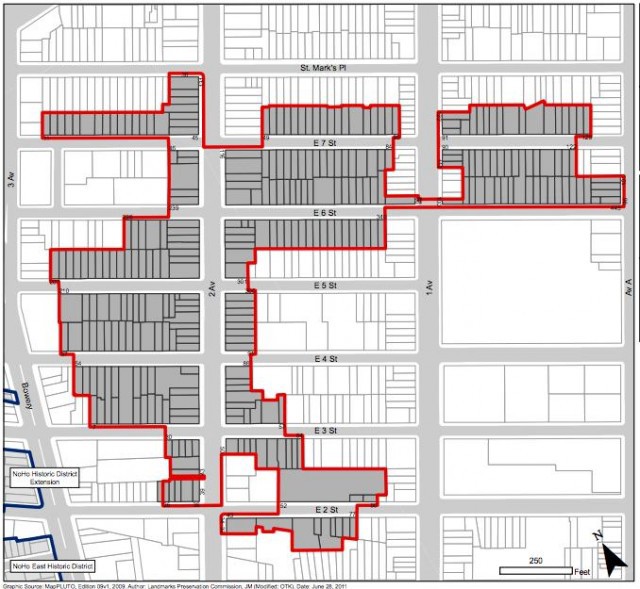The Permanent East Village: A Fascist Swamp of Crappy Buildings Now Historic

A central swath of the East Village, formerly known as Little Germany, then known as Little Kraków and Little Dnipropetrovsk, has, astoundingly, succeeded in achieving “historic district” designation. The district stretches down Second Avenue, which is now referred to as “Little Dartmouth Gangsta’s Paradise,” due to the habits of the khaki-clad worthies who clog its congested sidewalks of an evening, alternately issuing mating shrieks and vomit.
A little middle finger of the district extends up to St. Mark’s Place, and its dangling feet hit Second Street. All of First Avenue is not covered, because it is ugly. Congratulations to the hundreds of slumlords who now must receive Commission approval to make any alterations to their buildings, not that they were going to, most of which should be torn down anyway. (Here are photos of some that should be preserved.) Also congratulations to Philip Glass, whose home, it appears, makes up a tiny corner of the district.
To be fair, the neighborhood has been all downhill since 1834, when the City drained a swamp and imposed Tompkins Square Park on the people so as to create an public promenade to enforce socially acceptable behavior, except during the Mexican-American War (spoiler: we lost), when the park was a military staging ground, and then after, when the park became a meeting place for angry young unwashed people to march on Wall Street (the mid-1850s), until it became a Civil War encampment, and then until it again became a gathering place for dirty people to march on Wall Street. At last, several decades ago, “master builder” and white supremacist Robert Moses descended and imposed a new order on the park, so it could better serve as a fascist panopticon, until all the cool people died and the FBI wrote the musical Rent about it.
